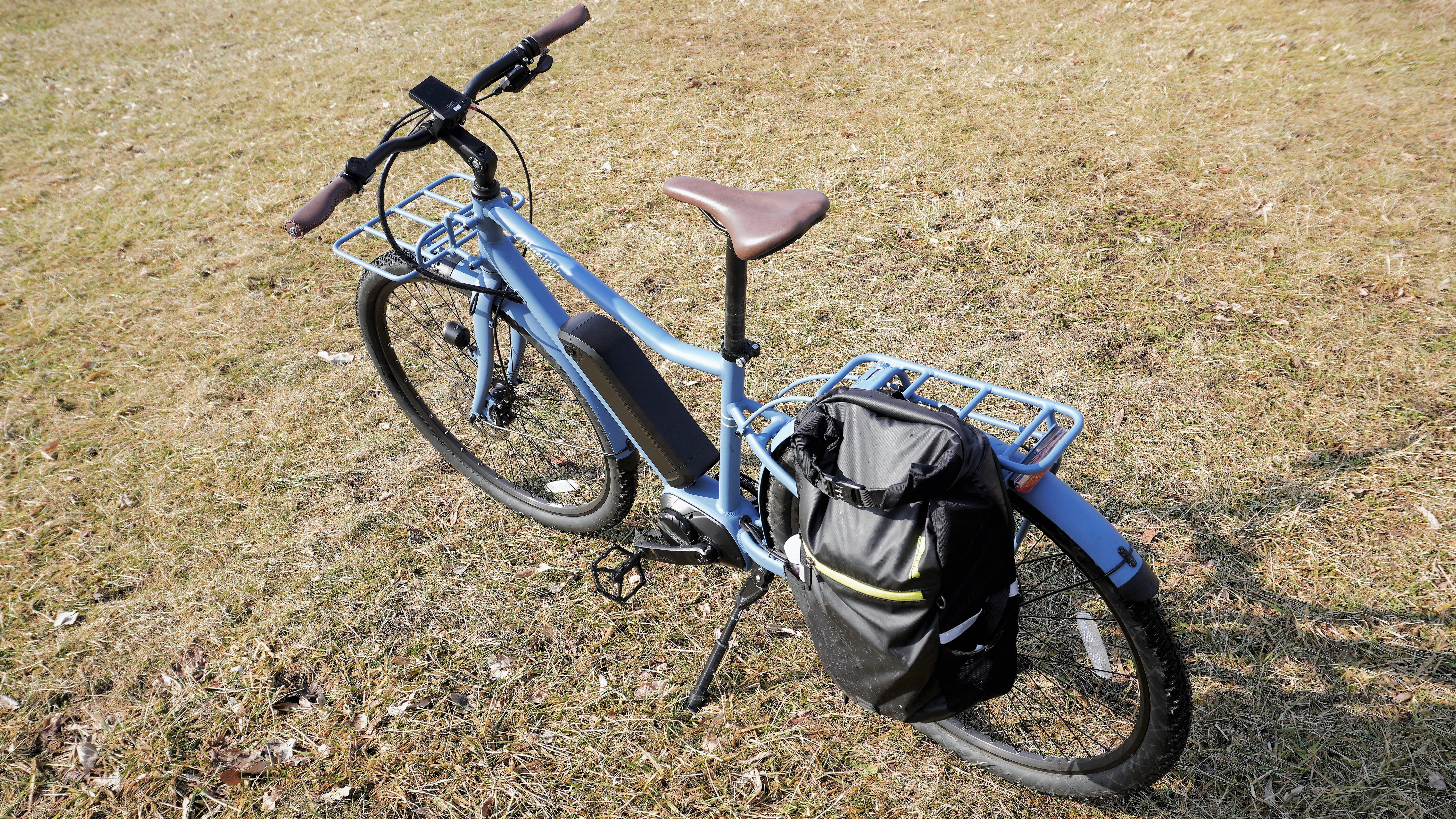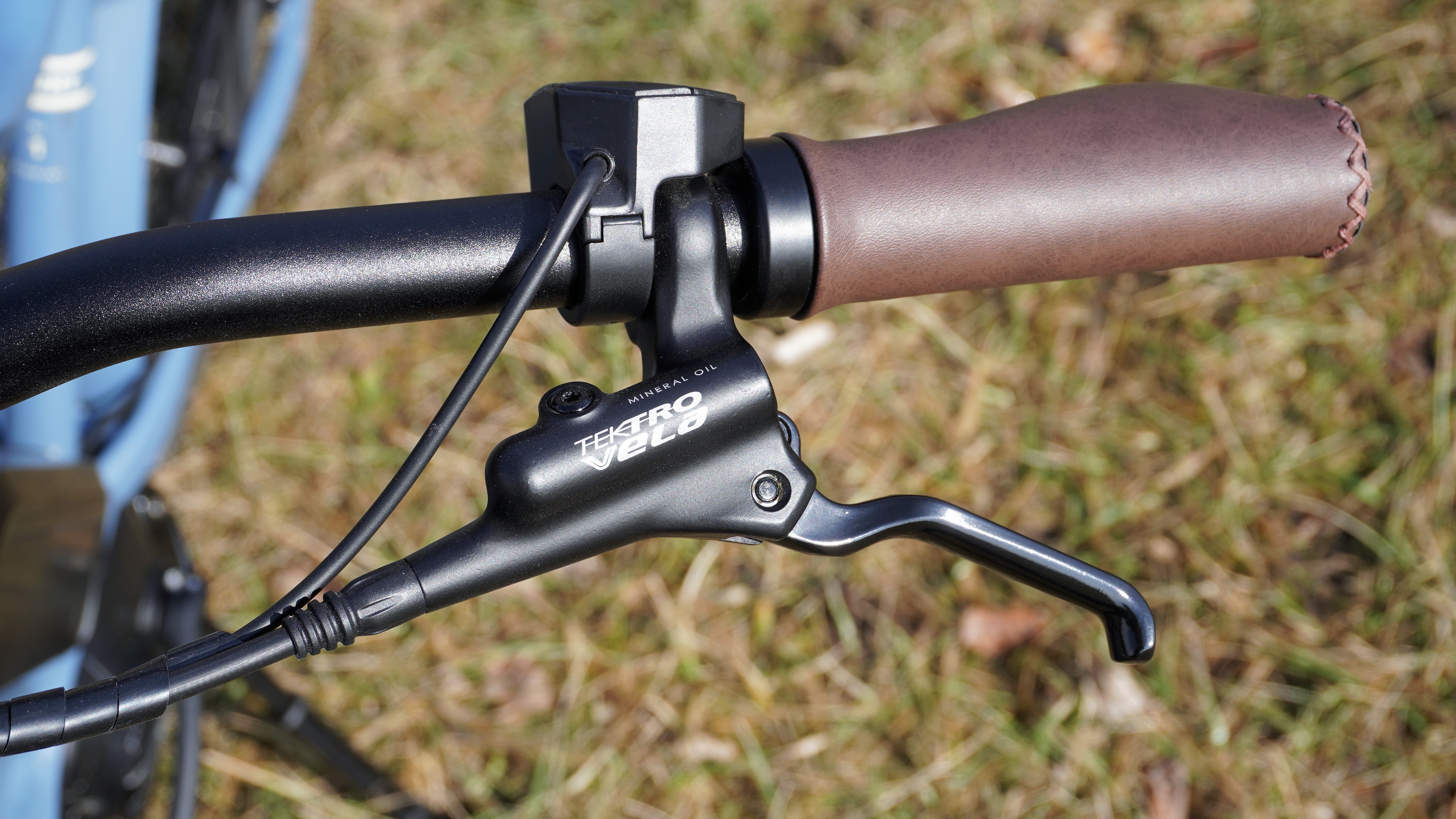TechRadar Verdict
The Bluejay Sport is a fantastic ride with a powerful mid-drive motor and beefy battery that are ready for modest excursions at high speeds, but this fully-loaded bike is pricey, and Specialized gives it serious competition.
Pros
- +
Readily accessible speed
- +
Comfortable, most-terrain riding
- +
High-quality components
- +
Fully kitted out
Cons
- -
High price
- -
Unsightly battery
- -
Seriously hefty
Why you can trust TechRadar
Two-minute review
The Bluejay Sport is an adventure-ready e-bike with all the motor power and range most riders are likely to want. Bluejay opts for premium parts to set itself apart from the crowd of mid-end e-bikes that can start to feel like they’re all the same, but that does come with a high price of $4,000 (about £3,000 / AU$5,500).
It’s a bit easier to stomach the price when we consider that the bike is almost like a motorcycle with a 28mph top speed that’s not hard to hit on flat ground. That’s thanks to the 500W mid-drive motor that gets all the mechanical advantage of a 10-speed Shimano drivetrain.
Bluejay is going well beyond the 250W rear hub motors and 350Wh batteries found on the more basic e-bikes, and its inclusion of a roughly $180 / £130 / AU$250 groupset and $800 / £600 / AU$1,100 motor, front and rear racks and fenders, integrated lights, and a 655.2Wh battery accounts for about half of the price. Bluejay also covers shipping and assembly at a bike shop.
All of that combines into a bike that’s a joy to ride both on city streets and out on trails, especially where we can hit those top speeds and fly. The Bluejay Sport makes for a fairly complete package that leaves little left to be desired. Not everyone is going to want a $4,000 e-bike though, especially when it weighs so much. But if you’ve got a garage and like to take little trips, it’ll be easy to love this ride.

Price and release date
The Bluejay Sport launched in November 2021 with the next batch coming in Q2 2022 for $3,995 (about £3,000 / AU$5,500). At the time of writing, pre-orders are available with a deposit of $1,998 (about £1,500 / AU$2,800).
That puts it in the mid-range price band, but towards the higher end – less than our current top-rated e-bike the Specialized Turbo Vado 4.0 (2022), but more than the excellent Ribble Hybrid AL e.
Design
The Bluejay Sport is a slick set of wheels, reminiscent of a classic Royal Enfield motorcycle with its matte paint job, luggage racks, and fenders, but it’s a proper tank of a bike, landing at 54.8 pounds (24.9kg) in our measurement.
Sign up for breaking news, reviews, opinion, top tech deals, and more.
It may boast an aluminum frame to keep the weight down, but with a monstrous 672Wh battery (actual specs listed on the battery we received are 46.8V/14.4Ah, 655.2Wh), 29-inch wheels with thick WTB Nano off-road tires, and a 500W Bafang M600 mid-drive motor (weighing 3.9kg on its own) as well as built-in steel fenders, front and rear lights, and racks (capable of holding 55 pounds in the rear and 22 pounds in the front), it’s a seriously kitted-out ride that nullifies any weight-savings offered by frame materials.

The bike comes in two sizes, one for riders 5’3” and up, and one for riders 5’10” and up. We tested the larger model, which can comfortably accommodate 6’3” riders with the seat fully raised. The handlebar stem angle is easy to adjust for different rider heights.
The bike doesn’t use the standard double-triangle frame shape, opting instead for a slightly more acute angle between the seat stays and chain stays as well as a bent top tube that offers a bit of extra standover clearance – a nice halfway measure toward being a proper step-through frame. It’s also not so standard as the mid-drive motor has a special attachment point, replacing the normal bottom bracket.
The convenience of this setup is that the weight is more centered than on e-bikes with a large motor in the back wheel. It’s also easier to remove or replace the wheels, because they’re just ordinary quick-release wheels. Bluejay has used a shark-style battery pack that locks onto the frame, but it comes off with a key for easy re-charging.
It’s a fairly maximalist bike. It has a color LCD display for viewing ride and battery details like trip distance, odometer, motor wattage, battery percentage, and speed (though the display curiously will only display whole miles traveled despite having a decimal) and a thumb switch for controlling the electronics. Bluejay opted for a 10-speed Shimano Deore groupset with a 42-tooth chainring.
Where many of the more affordable e-bikes opt for simple, mechanical disk brakes, Bluejay has stepped up to Tektro Vela hydraulic disc brakes with dual-piston calipers that clamp in from both sides of the disc. Even the seat and handlebars dabble in style with a leather-like finish.

Performance
For all its weight, the Bluejay Sport makes for an almost effortless ride. The power we got out of the 500W mid-drive motor channeled through the different gears makes it easy to get up and go from a standstill, cycle up a hill or into a headwind, and cruise along at the bikes 28mph top speed without even rising up out of our saddle. Simply put, none of the rear-hub e-bikes we’ve tested make it this easy to zip around (though most also cost much less).
While Bluejay has included a 10-speed sprocket, we rarely found ourselves going for anything below the sixth gear. The motor offers five levels of pedal assist, but even the first level makes acceleration up to about 18mph an easy task without needing to shift through many gears.
When we did switch gears, the Shimano Deore shifter was snappy. Since the Bafang motor has a torque sensor, all it has to detect is a bit of pressure from our foot, and it’ll step in to help. The difference coming from an e-bike with a cadence sensor is a major step up.
There’s just a little bit of weirdness with this setup, though, as the motor can spin freely from the cranks, so reverse pedalling doesn’t actually spin the chain and the chainring continued to spin briefly after we stopped pedalling.

The aluminum frame had a bit of flex when we put muscle into each pedal, but didn't feel flimsy. The ride was also kept somewhat smoother by the softness of the frame. Even riding the bike with a saddlebag on the back and our 230lb load, the Bluejay Sport didn’t feel overloaded.
We took the bike on one longer excursion, cycling about 20 miles total. The ride offered a lot of mixed terrain, with plenty of pavement, hills, mud, and slush. Between the bike’s frame, ergonomic handlebars, lightly padded saddle, and thick wheels, it was a comfortable ride until near the end when we got a bit saddle sore. It impressed us with how well it handled all the conditions we put it through, though.
Bluejay’s choice of wheels inspire confidence on shifty terrain, and we were able to wheedle our way through slushy snow at about 10mph without eating ground. The fenders did an excellent job of keeping spray off our back, though ankles and shoes weren’t spared.
When a long ride saw us out past sunset, the bike’s integrated head and tail lights were helpful in a pinch, even if the headlight was low down and harder to see from the right side of the bike. When navigating traffic, the Tektro hydraulic disc brakes did a fantastic job bringing all of the combined weight of the bike and ourselves to a halt.

Our riding saw the battery last for about 23 miles of mixed riding, largely on flat terrain, with a lot of level-five assist and 40-50% of the riding at lower levels. It was decent riding even with the lowest assist, though was is a little hard to settle for that after we’d felt the top speeds readily within reach.
Once the battery is dead, riding becomes the same old slog we’ve run into on most e-bikes. The extra weight doesn’t help, and it still feels like we’re fighting against the unpowered motor. The gearing helps with acceleration, and we can putz along at 10-12mph without too much work, but it’s just nothing like riding even a cheap, non-electric bike.
With the included 48V/2A charger, it should take seven hours to completely recharge the bike’s battery (though likely slightly longer from any energy lost to heat during charging).
First reviewed March 2022
Buy it if
You want effortless speed
The Bluejay Sport makes it truly easy to fly down the road at 28mph with about the same effort that might get you going 14mph on a traditional bike.
You want a fully kitted bike
You’re paying for a powerful e-bike, but you’re also paying for serious cargo racks, lights, and fenders. If you’re paying for them, you should be planning to take advantage of them.
You want minimal fuss
There’s a lot going on with this bike, but Bluejay pays to ship it to a bike shop for assembly. Once you’ve got it, disc brakes and a single derailleur make for simple enough upkeep, and you won’t have to deal with the odd back wheel found on hub motor e-bikes.
Don't buy it if
You want serious distance
The Bluejay Sport can go fast, and it may have decent range lower assist levels, as Bluejay suggests a 75-mile range, but once the battery is dead it quickly stops being fun to ride. The WAU X can go further for the price.
You want subtlety from your e-bike
Some e-bikes fly under the radar with more modest speeds, designs, and streamlined battery packs. This bike isn’t that. The $4000 Specialized Turbo Vado 4.0 and $3,299 Priority Current fit that bill better without sacrificing much while the Ride1Up Prodigy trims a little to cut the price nearly in half.
You have to hike up a lot of stairs
The Bluejay Sport is darn heavy. The frame gives a good spot to hold it, but we’d feel deterred from using it if we were hauling it up and down three or more flights of stairs every time we wanted to ride. The battery is removable for charging, but that won’t help much if you don’t have a garage for storing the bike.

Over the last several years, Mark has been tasked as a writer, an editor, and a manager, interacting with published content from all angles. He is intimately familiar with the editorial process from the inception of an article idea, through the iterative process, past publishing, and down the road into performance analysis.
